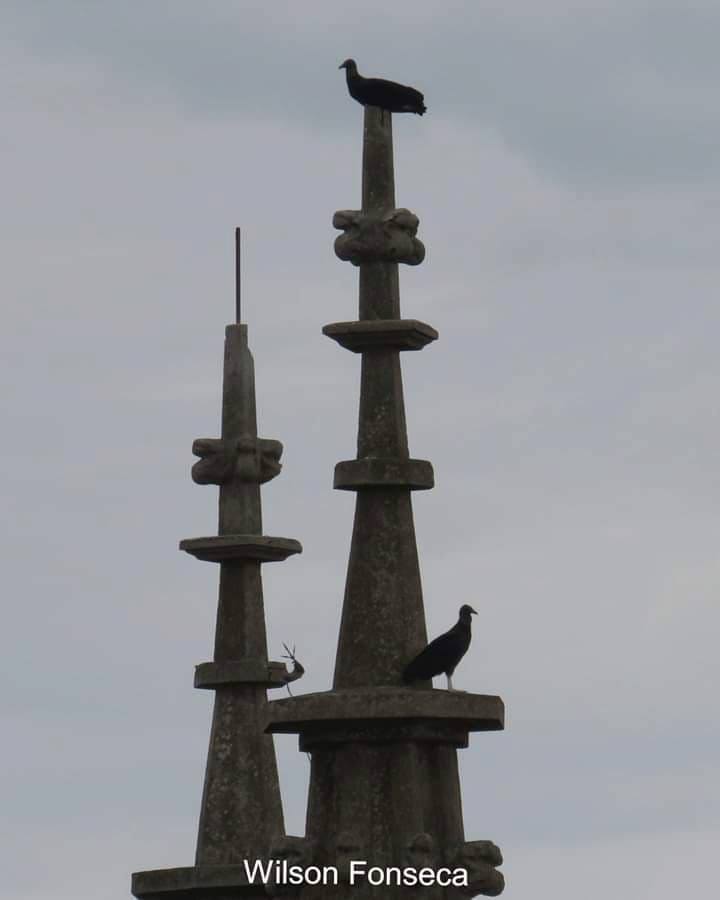

The black vulture is a scavenger and feeds on carrion, but will also eat eggs or kill newborn animals (livestock such as cattle). It has black plumage, a featherless, grayish-black head and neck, and a short, hooked beak. With a wingspan of 1.5 m (4.9 ft), the black vulture is a large bird, though relatively small for a vulture. It inhabits relatively open areas which provide scattered forests or shrublands. Despite the similar name and appearance, this species is unrelated to the Eurasian black vulture, an Old World vulture in the family Accipitridae (which includes eagles, hawks, kites, and harriers). It is the only extant member of the genus Coragyps, which is in the family Cathartidae. Although a common and widespread species, it has a somewhat more restricted distribution than its compatriot, the turkey vulture, which breeds well into Canada and south to Tierra del Fuego. The black vulture ( Coragyps atratus), also known as the American black vulture, Mexican vulture, zopilote, urubu, or gallinazo, is a bird in the New World vulture family whose range extends from the northeastern United States to Peru, Central Chile and Uruguay in South America. In prehistoric contexts, therefore, an intergroup genetic approach can provide more reliable grounds for sociocultural inferences.Approximate range of the black vulture (note: range throughout the West Indies is erroneous) Such results suggest that the intergroup analysis is more sensitive to the genetic effects of differential migration rates between the sexes. Within-sex differences in intergroup analysis turned out to be more evident yet, when those 3 villages were investigated separately, the female FST (0.0609) proved to be significantly higher than the male FST (0.0218). The ethnographic evidence shows that three of the four subgroups studied belong to the same gamic unity, with the fourth subgroup belonging to another gamic network. On the other hand, the intergroup approach detected a level of variation significantly greater among females than among males. Individual mean per locus heterozygosities were not different between the sexes, and the analysis of genetic heterogeneity showed similar gene frequencies for males and females in all villages. The results were only partly concordant with the expected. We investigated the within-group and between-group genetic variability among males and females from 4 villages of an uxorilocal Amazonian tribe, the Urubu-Ka'apor, on the basis of 20 polymorphic loci. Despite a recent attempt to interpret this phenomenon in terms of population genetics (Konigsberg 1988), the main assumption has never been tested in situations in which the real residential practice of an indigenous population is known and in which genetic rather than phenotypic data are available. These studies, which focus on the sexual distribution of skeletal traits, assume that the degree of intragroup or intergroup biologic diversity is higher in one sex with regard to unilocality (uxori- or virilocality).

The analysis of biologic variation in prehistoric human populations separately by sex has been used as a tool to recover post-marital residential rules.


 0 kommentar(er)
0 kommentar(er)
